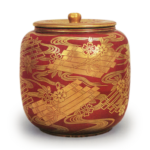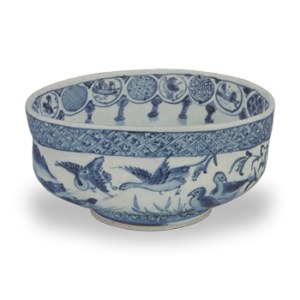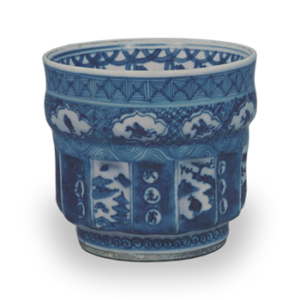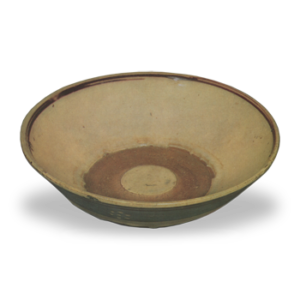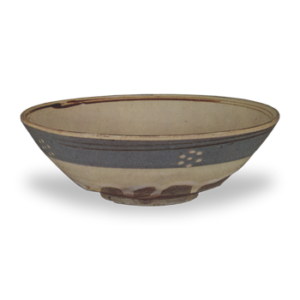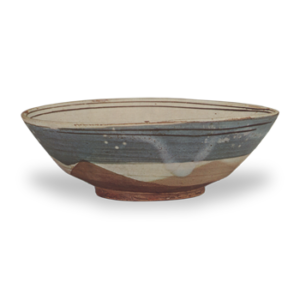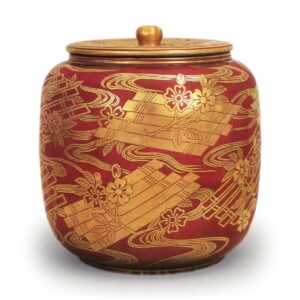
Height 15.9cm, Diameter 10.7cm, Body diameter 15.4cm, Bottom diameter 10.1cm
The so-called kinrande red painting, which uses gold paint to create elegant patterns on a red background, is another area in which the Conservation Department excels. The old kinrande red painting, which was mainly produced during the Jiajing period of the Ming Dynasty, used gold leaf, but the kinrande red painting produced by the Conservation Department uses gold paint. Moreover, the designs of the Conservation Department’s kinrande red painting have been adapted to Japanese styles, which is another feature of the Conservation Department’s kinrande red painting.
This is a so-called “jujube-shaped” water jar with a wide mouth, and the strings on the lid represent five-petaled flowers. The inside of the lid, the lid and body joint, and the bottom of the jar were covered with a transparent glaze and fired, and then red overglaze enamels were applied to the inside and outside of the lid, and finally gold paint was used to draw the floral design all over the surface. The design of the cherry blossoms is unusual, as it is made using the “ori-eda” style, and the raft is also made using gold paint and lines to add variation. The center of the bottom is slightly raised, and on the underside of the bottom is the “Kawahin Shiryū” seal, which is said to have been received from the Kishū Tokugawa family in the 10th year of the Bunsei era. It is stored in a matching box, and on the front of the lid is written “Kinrande Hanaikada Gosuiji”, on the back of the box is written “Zenichirozo”, and the Eiraku seal is stamped, but the preservation of Zenichiro is dated to 1846, as can be inferred from the fact that the words “Kinrande water jar, good for early autumn in the year of the Fire Horse (signature)” are written in another hand on the underside of the lid. According to tradition, this was brought by the daughter of the Todo family as one of her trousseau items, and it seems that it was a special order item, as the signature “Zenichirozo” is written on the underside of the box.

